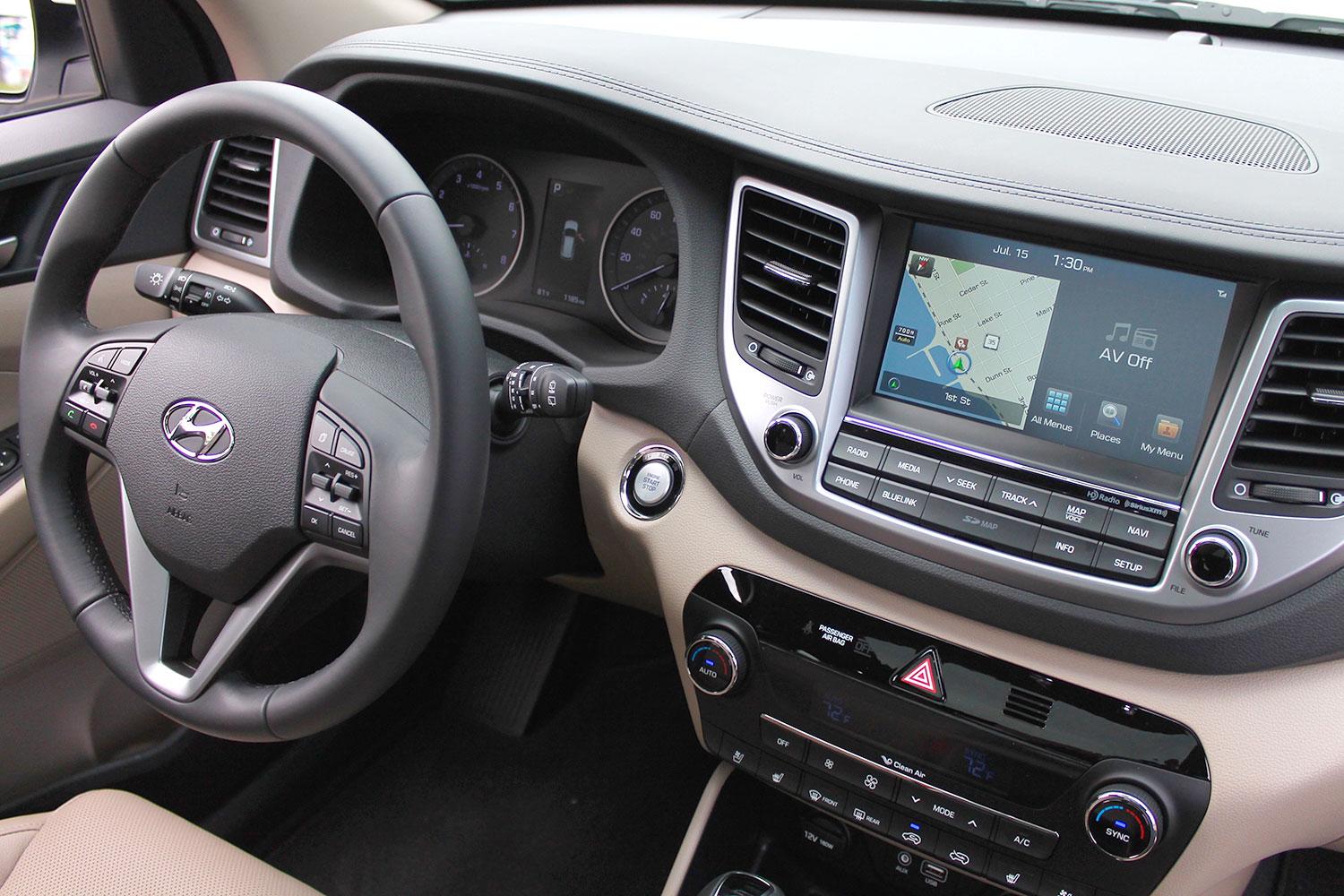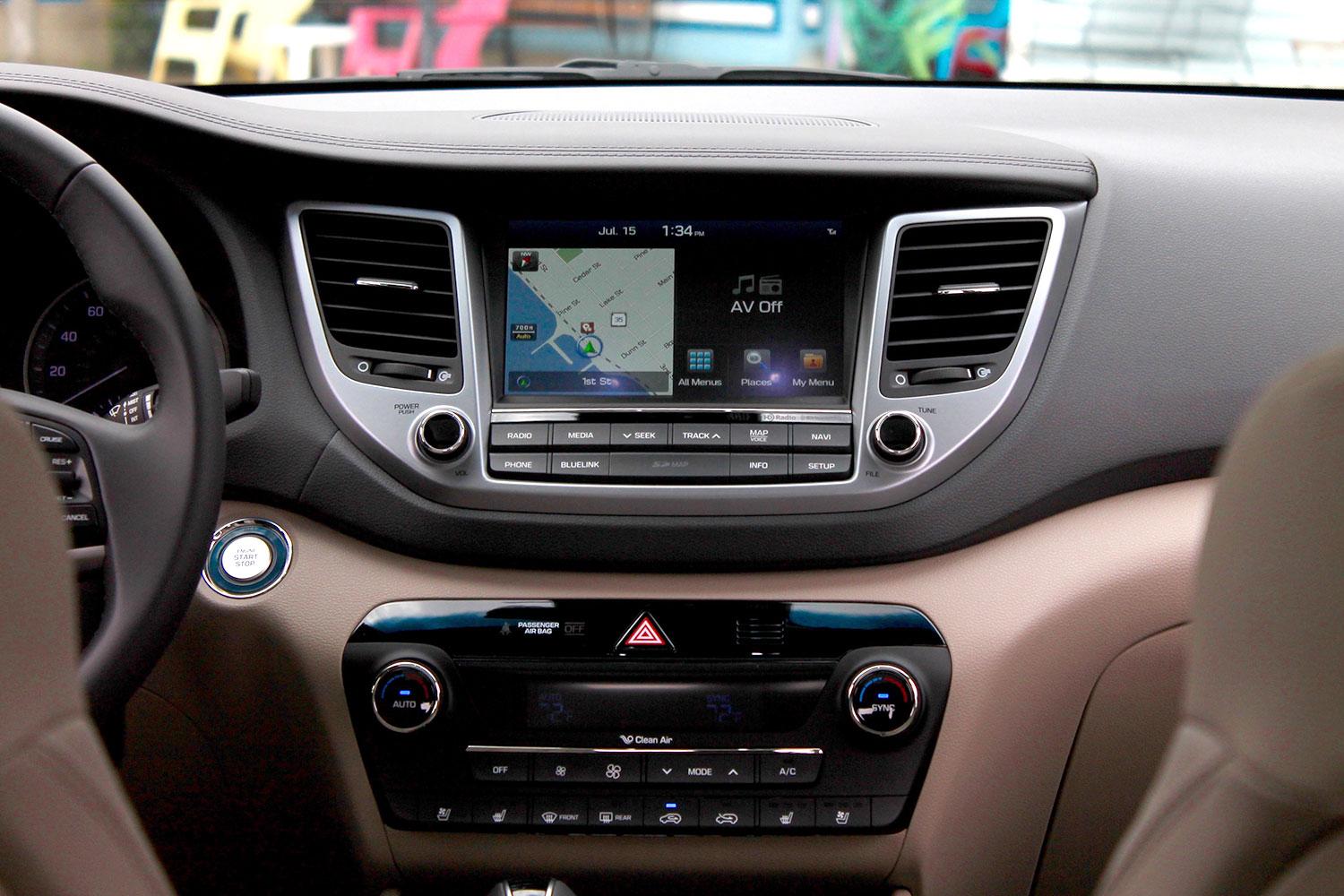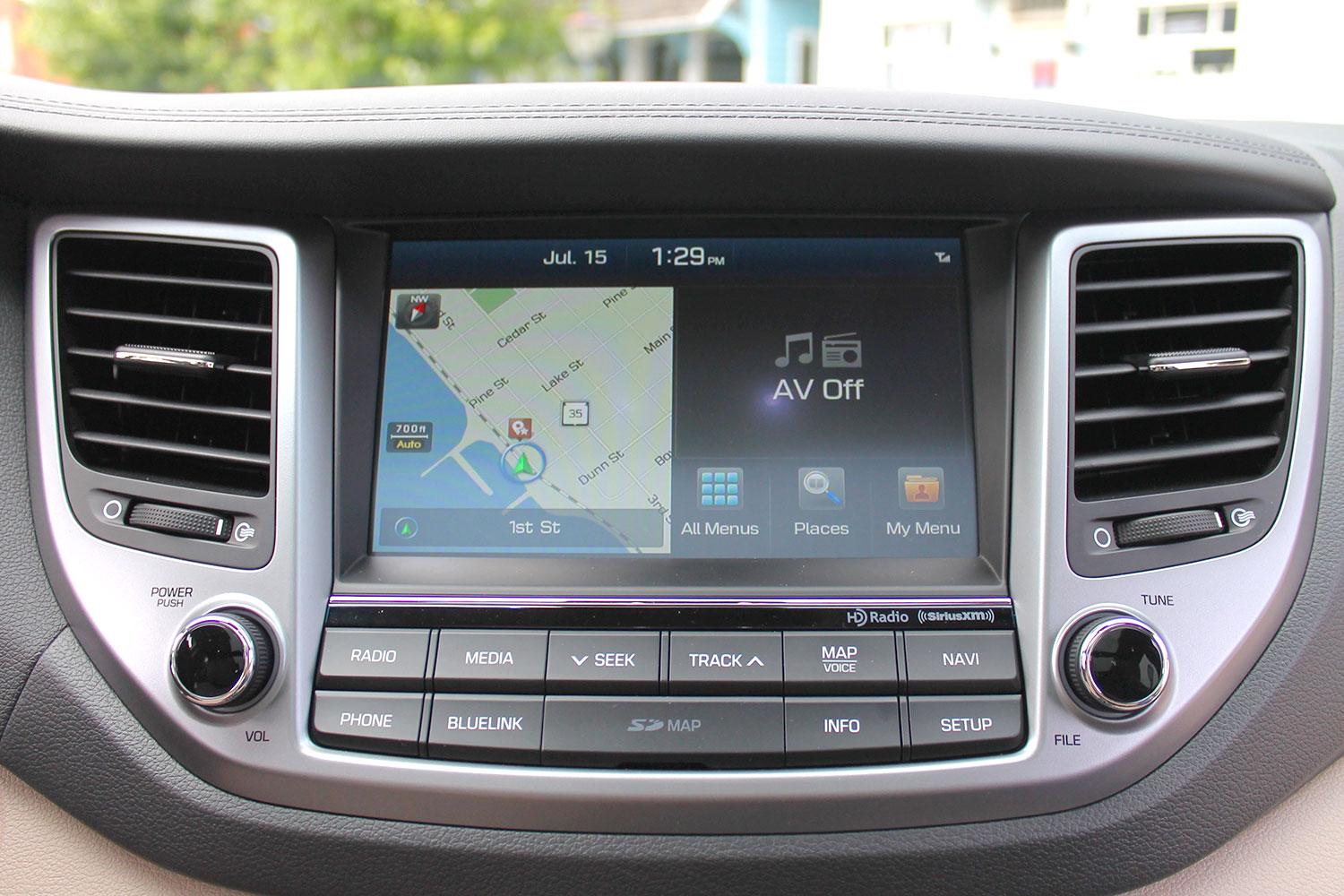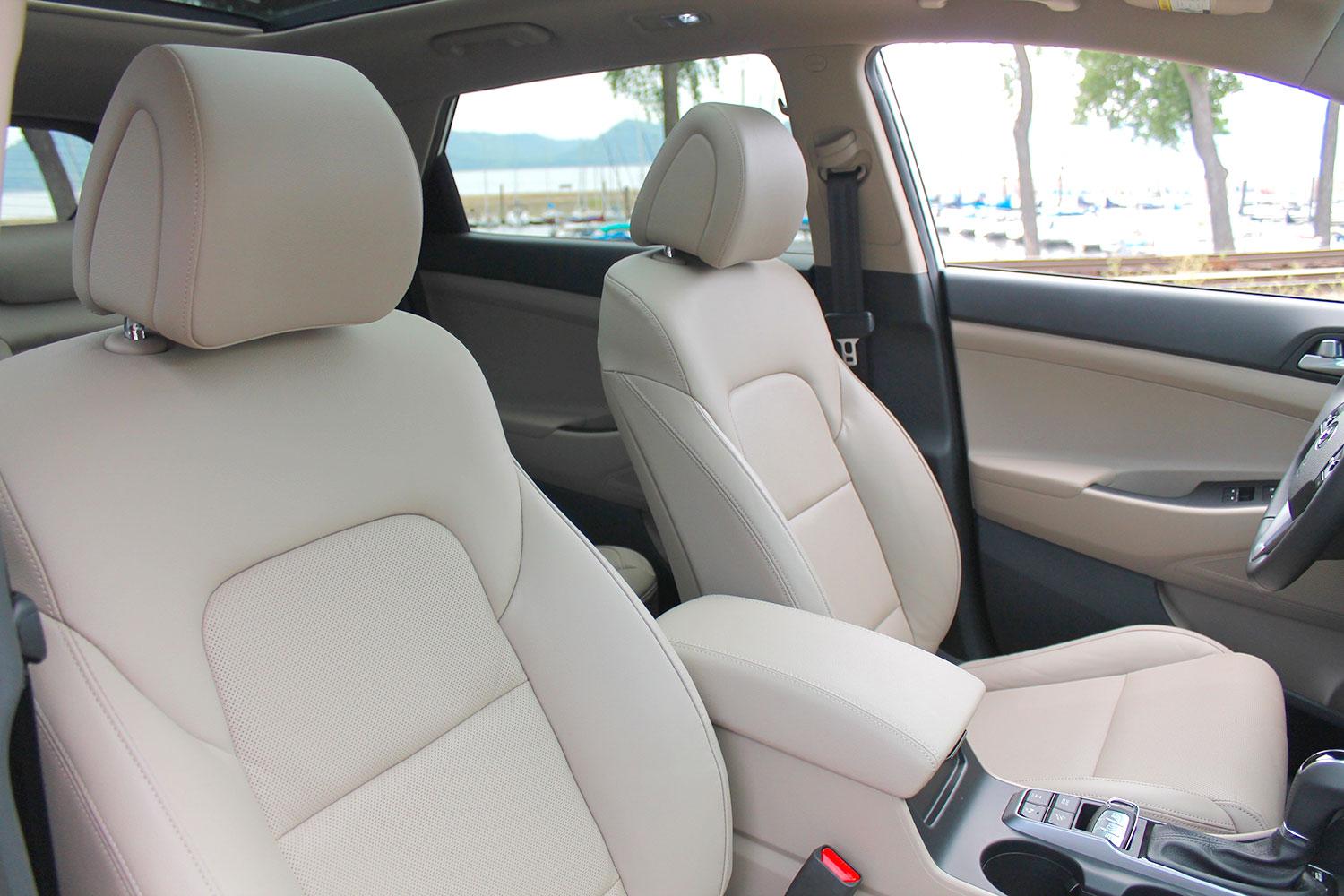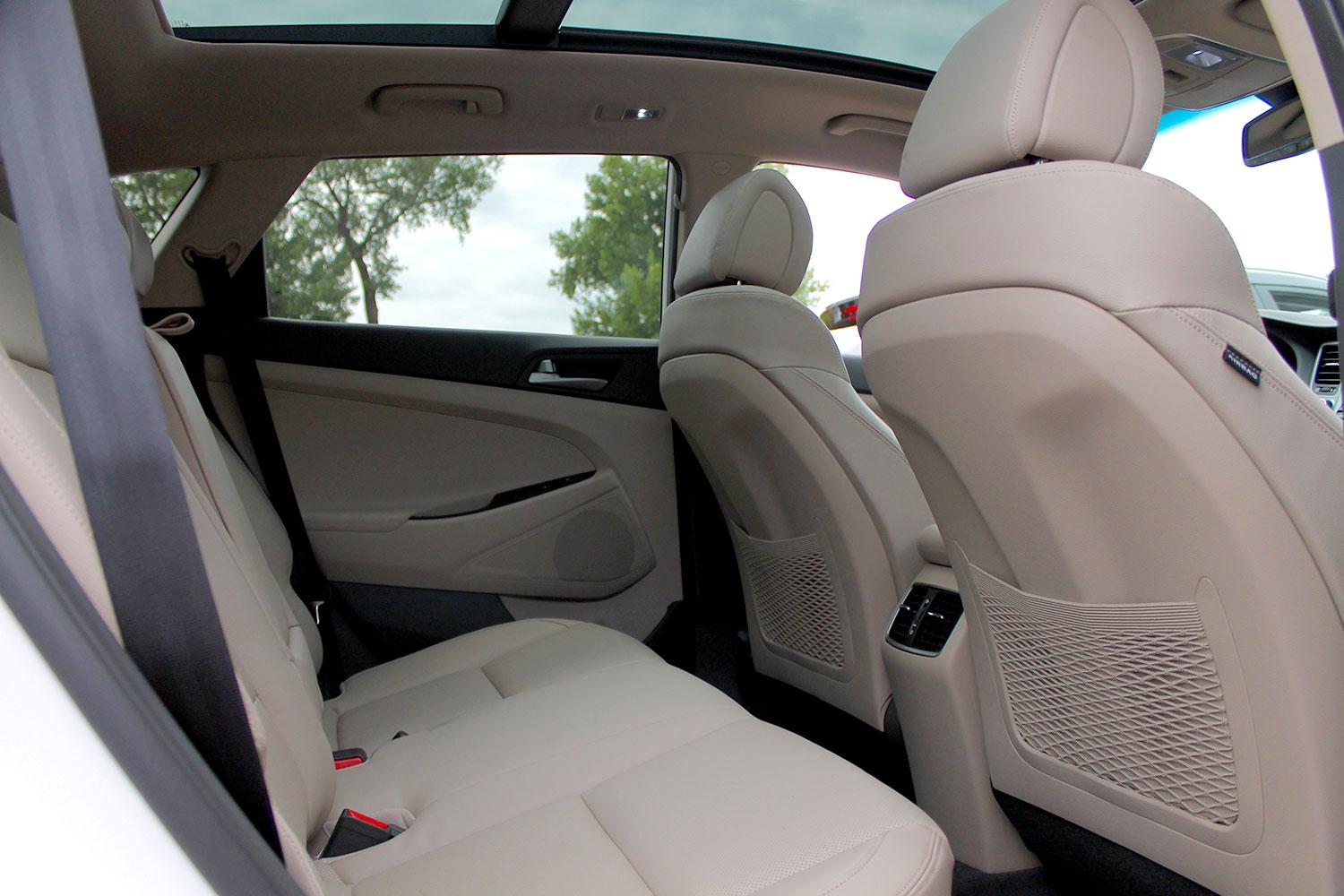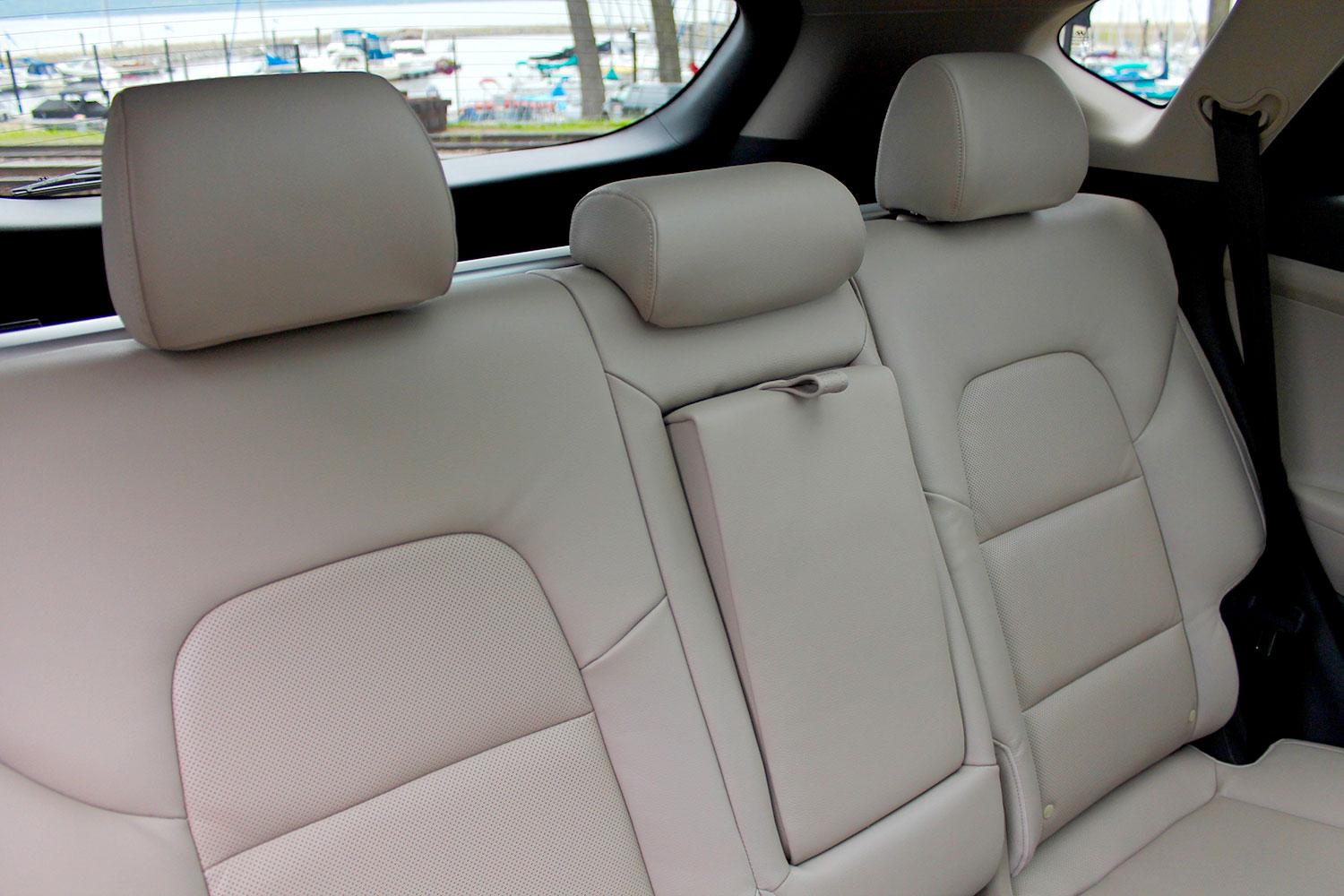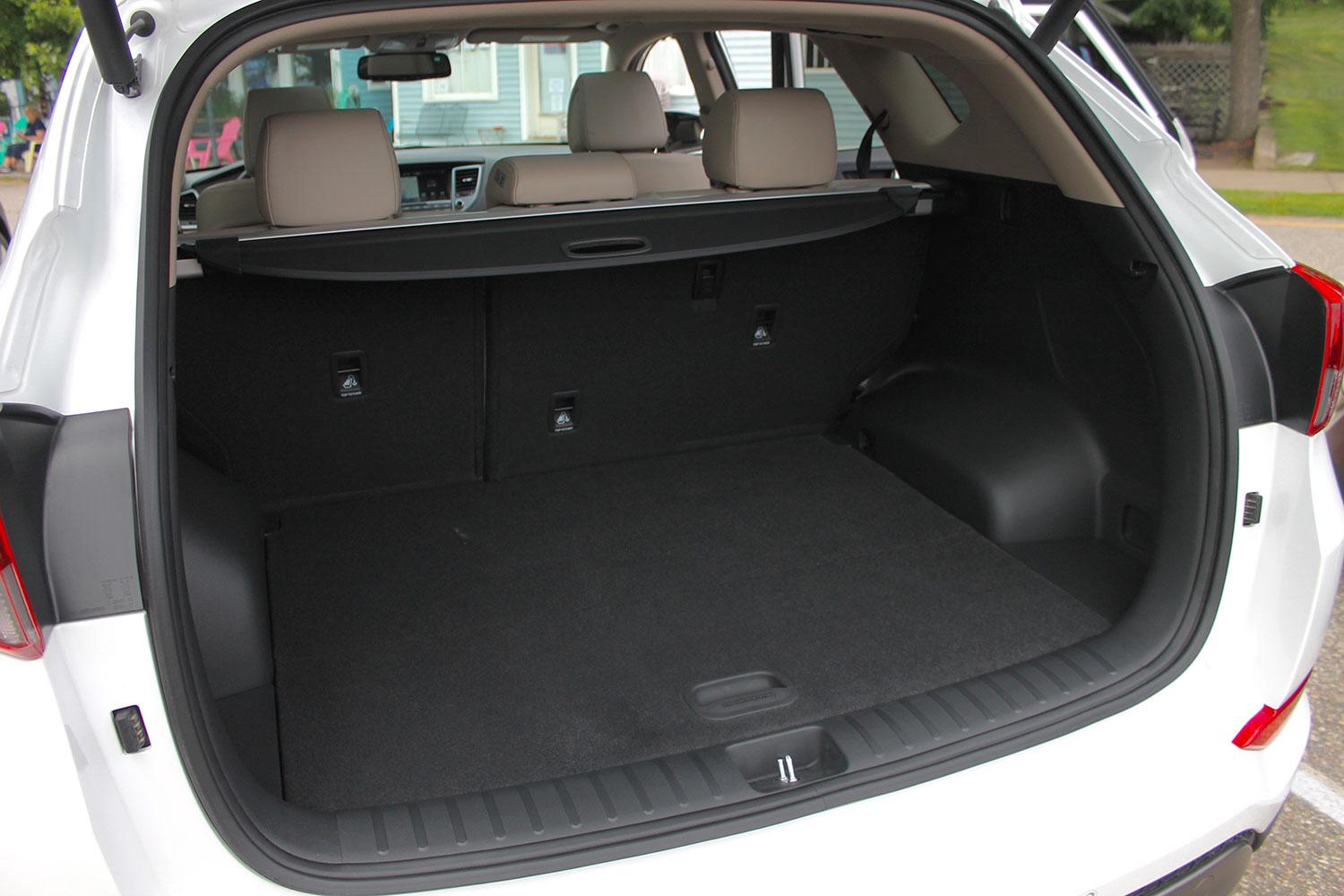Hyundai’s brand image continues to improve every year, and cars like the ambitious 2016 Tucson are exactly why.
If vehicle classes were music genres, crossover SUVs would be the pop stars of the lot. Designed for mass appeal, CUVs are an amalgamation of several types of automobile — think about the melodies of a station wagon with the bass of a 4×4, mixed with the steady beat of a car platform.
In recent years, Hyundai has allotted the bulk of its resources to upscale sedans and economy cars, somewhat overlooking the CUV segment in favor of reinforcing brand image. But one in three new vehicles sold in the U.S. is a crossover or SUV, so the Korean brand must strengthen its ties with the burgeoning market to establish itself as a global player. To do that, the company has ramped up production and advertising budgets for the category significantly.
The dividends of this move have paid out in the stylish 2016 Tucson, which is more exciting and well-equipped than ever for its third generation. Will it be enough to take on the CR-Vs, RAV4s, and Mazda CX-5s of the world? I jetted to the vehicle’s first drive event in Minneapolis, Minnesota, to find out.
First impressions
For a $1,050 premium over last year’s model, the $22,700 base Tucson has been fitted with a sharp new body that is more angular, attractive, and geometric than before. My $31,300 Limited AWD model added 19-inch wheels, LED headlights, and chrome accents among other things, which caught the eyes of several bystanders outside our hotel.
“That is a great-looking car,” one woman said succinctly. I have to agree.
I shuffled over to my test vehicle through the warm Minnesota air and took a look inside. The vehicle’s interior was inspired by the sleek and modern Terminal 5 at JFK airport, combining premium elements such as ventilated leather seats and a huge panoramic roof with a clean, simple layout and attractive controls. It’s not as bold as the cabin of the larger Santa Fe, but the Tucson’s cockpit is definitely a comfy place to be.
The 2016 Tucson may very well be the best-looking car in its class.
Hopping around to the back to stow my things, the hands-free liftgate sensed my key fob and popped open automatically, a nice touch whether you’re a grocery-carrying parent or just haven’t had your coffee yet.
I didn’t need the extra space, but I was pleased to see that the dual-level floor could be lowered by two inches for tall items like shrubs and furniture. The Honda CR-V still has more cargo volume though, with 70.9 cubic feet of seat-down room compared to the Hyundai’s 61.9; the Toyota RAV4 posts even better numbers with 73.4 cubic feet. The Hyundai’s passenger volume is rated at 102.2 cubic feet however, which is more than a well-equipped CR-V or RAV4, but slightly less than the fun-to-drive CX-5.
Does it drive as well as it looks?
Trip odometer zeroed and drive routes locked in, we were off. A 1.6-liter turbo with 175 horsepower and 195 pound-feet of torque lies under the hood of every Tucson save the base SE trim (it gets the 164-hp 2.0-liter from last year), and it’s mated to a new 7-speed dual-clutch that was developed in-house. The engine is smooth but not particularly impressive from a performance standpoint (it is pulling 3,710 pounds after all). The dry-clutch gearbox is quite adept at finding the optimal gear, however, and the dual-clutch system gives the car a more sporty acceleration feel than a continuously variable transmission. Don’t look for paddle shifters, though, not even on the $26,150 Sport trim.
Crossover buyers prioritize fuel efficiency, and my AWD tester returned 24 mpg city, 28 mpg highway, and 26 mpg combined. With just the front wheels receiving power, those numbers jump to 25 mpg city, 30 mpg highway, and 27 mpg combined, although there is an Eco version ($24,150) with 17-inch wheels, less weight, and more aero with figures of 26 mpg city, 33 mpg highway, and 29 mpg combined.
The Hyundai’s passenger volume is rated at 102.2 cubic feet, which is more than a well-equipped CR-V or RAV4.
On the road, the Tucson is comfortable and planted over a variety of surfaces. The AWD system shifts torque to whichever wheel has the most grip, and we tested its mettle over a section of loose gravel and dirt. We emerged from the dust cloud covered in a layer of silt, but we did so confident in the car’s abilities in light off-pavement conditions. It felt good.
Thanks to an alloy of high-strength steel, the Tucson’s chassis is 48 percent stiffer for 2016, yet its multi-link rear suspension and front-mounted MacPherson struts mitigated Minneapolis’ bumps, potholes, and other imperfections splendidly. That’s with 19-inch rims, mind you. That said, it is a crossover. There’s a fair amount of progressive body roll and the electric steering feels quite numb, but it’s no worse than the other vehicles in the segment.
More impressive yet is the cabin noise. Despite the stiffer body and more vertical windshield, increased sound dampening and insulation mean the Tucson is actually quieter than the CR-V, RAV4, and Ford Escape.
Tech and safety
According to Hyundai, the average Tucson buyer is an active and stylish pre-family customer, a modern demographic that yearns for infotainment, safety tech, and unique design. In that category, the Tucson does quite well, though there are a few key elements missing.
Let’s start with the good stuff. Blind-spot monitoring with cross-traffic alert, lane departure warning, automatic emergency braking (for vehicles and pedestrians), a 4.2-inch gauge cluster display, and an 8-inch touchscreen are all available on the Tucson, the latter of which boasts the Blue Link 2.0 telematics system. Blue Link includes Google-based point-of-interest searches, navigation, and collision detection, and with the Blue Link app, customers can start their car, operate the door locks, flash the lights, call roadside assistance, and locate the car via smartphone or smartwatch.
As for the touchscreen, I found it relatively intuitive to use, and it splits down the middle to display navigation and entertainment functions simultaneously. Android Auto and Apple CarPlay compatibility should show up a bit later down the road, but Apple Siri, Pandora, and Yelp are already onboard.
That said, neither adaptive cruise control nor lane keep assist are available on any trim. Hyundai admitted that the sensors for those functions are already in place on the car, but a $300-$400 increase in price could be detrimental to the car’s value. If they don’t make it into the 2017 or 2018 model year Tucson, I’d be very surprised.
The DT Accessory Pack
Up your game and the get the most out of your gear with the following extras, hand-picked by our editors:
TMS roof mount bike rack ($55)
The Tucson is made for lively young folk, and nothing says active youngster like a mountain bike. This rack will allow you to bring some trail-ready transportation wherever you go.
Apple Watch ($470)
Hyundai’s Blue Link app, which can remotely start your car and monitor vehicle functions, has been updated to work with smartwatches. Blue Link 2.0 is available on the range-topping Tucson Limited.
Motorola Moto 360 (149)
We’re not just about Apple products, and Hyundai’s Blue Link also works with Android Wear-capable smartwatches like the sleek Moto 360.
Conclusion
The 2016 Tucson may very well be the best-looking car in its class, and it’s nice to see the excellent aesthetic design spill over into other areas. Compared to the top dog CR-V, it falls just a hair short. Minor complaints like numb steering and underpowered engines are forgivable for this type of vehicle, but the lack of adaptive cruise control and relatively low cargo volume are not.
However, with its strong value point, refined ride, and bounty of available features, Hyundai’s striking crossover is without a doubt a strong player in the segment. And if Hyundai’s upward moves brand-wide are any indication, the automaker’s entry-level CUV is a good sign of things to come.
Highs
- Attractive from every angle
- Cheaper than CR-V and RAV4
- Quiet ride
- Up to 33 mpg highway with FWD Eco model
- Optional full-length panoramic roof is sublime
Lows
- Engine lacks grunt
- Adaptive cruise and lane keep assist aren’t available
- Numb electric steering
Editors' Recommendations
- 2025 Hyundai Tucson Plug-In Hybrid gets improved tech features
- Hyundai Ioniq 5 first drive review: Retro modern
- Hyundai recalls nearly half a million Tucson SUVs over fire risk
- Hyundai Sonata Hybrid’s solar roof can deliver up to 700 miles of ‘free’ driving
- Additional driving range makes the Hyundai Ioniq Electric a more competitive EV




